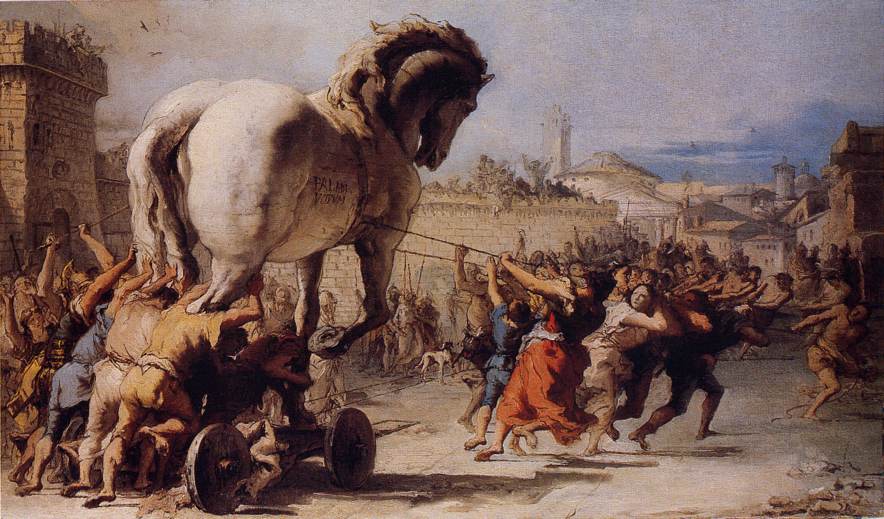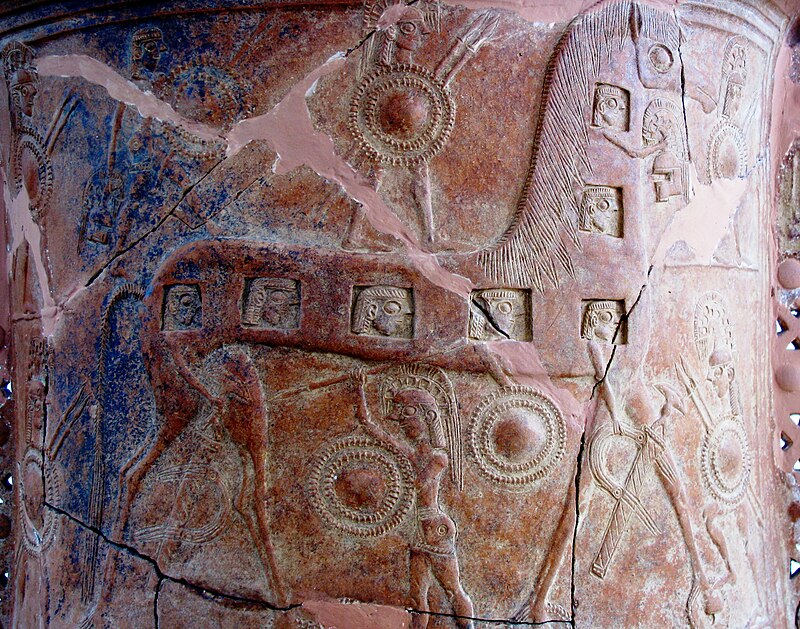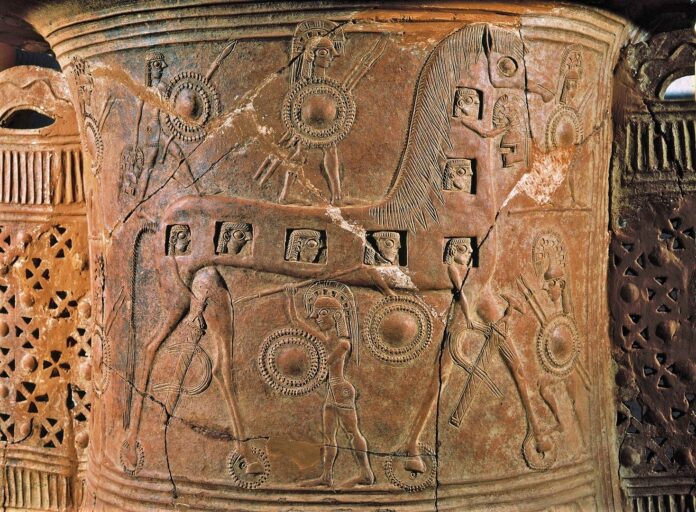Discovered in 1961 on the Greek island of Mykonos, the Mykonos vase, a large pithos, has emerged as one of the earliest artistic interpretations of the Trojan Horse narrative from Homer’s Iliad. This remarkable artifact, dating back to circa 670 BC, stands as a centerpiece of the island’s Archaeological Museum, offering a unique window into the Archaic period and the enduring legacy of the Trojan War.
Artistic Depiction on the Vase
The vase’s design is divided into distinct segments, with the uppermost section capturing the iconic Trojan Horse encircled by Greek warriors, identifiable by their characteristic rounded shields and spears, peeking from the horse’s portholes. Below this, three rows of metopes depict poised figures, hinting at an impending battle, while the bottom of the vase remains unadorned.

Upper Segment: Trojan Horse
The upper segment of the vase features the Trojan Horse, surrounded by Greek warriors. These warriors, distinguishable by their rounded shields and spears, are seen peeking from the horse’s portholes, preparing for the surprise attack.
Middle Segment: Metopes and Battle Scenes
Below the depiction of the Trojan Horse, three rows of metopes present poised figures, suggesting the anticipation of battle. The artistic rendition on the pithos is formulaic; the warriors are depicted with their heads and legs extending from behind their shields. Unlike those portrayed in the upper metopes, the warriors on the main body of the pithos appear without shields, engaging directly with defenseless Trojan women and children, depicted with expressive gestures and thick tresses.

Symbolism and Interpretation
This vase uniquely illustrates the sack of Troy by focusing on the deceptive Trojan Horse and the ensuing massacre. Unlike typical battle scenes, there are no Trojan warriors depicted—only vulnerable women and children—suggesting a critique of the Greeks’ merciless tactics. The separation of scenes into slaughter and deception emphasizes the brutality of the sack away from the battlefield’s front lines.
Central Figures and Their Significance
Noteworthy are three isolated figures in the central metopes: a warrior drawing his sword, a woman clasping her hands in despair, and a fallen warrior beside his shield. These solitary figures underscore the personal toll of the conflict, highlighting individual suffering amidst widespread violence. The central dead warrior, whether Greek or Trojan, symbolizes the universal futility and devastation of war.

Thematic Depth
The layout of the Mykonos vase suggests a complex narrative, resisting a straightforward chronological narrative and challenging the viewer’s perspective by juxtaposing the internal view from the horse’s portholes with the external havoc. This artistic strategy not only draws the viewer into the Trojan experience but also evokes a deeper empathy for the victims, reflecting on the tragic consequences of the Trojan war beyond the legendary deceit that precipitated it.
Conclusion
Through its detailed portrayals and symbolic representations, the Mykonos vase offers more than an archaeological curiosity; it provides a profound commentary on the nature of human conflict, the deceit that can precede destruction, and the innocent lives that bear the consequences. As a pivotal piece of Archaic period art, the Mykonos vase stands as a testament to the enduring power of artistic expression to capture the complexities and tragedies of the human experience.




